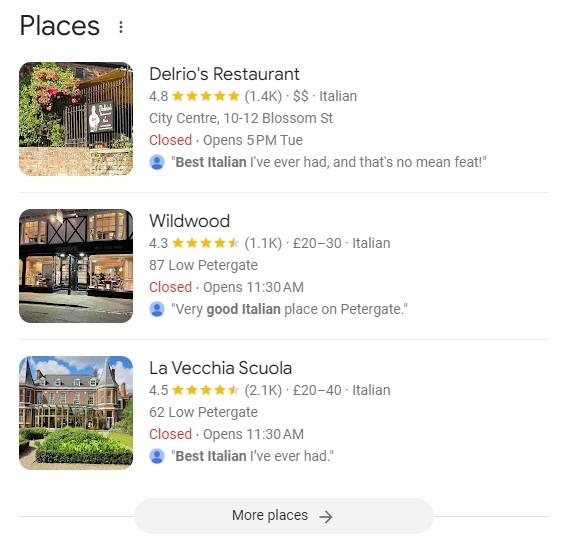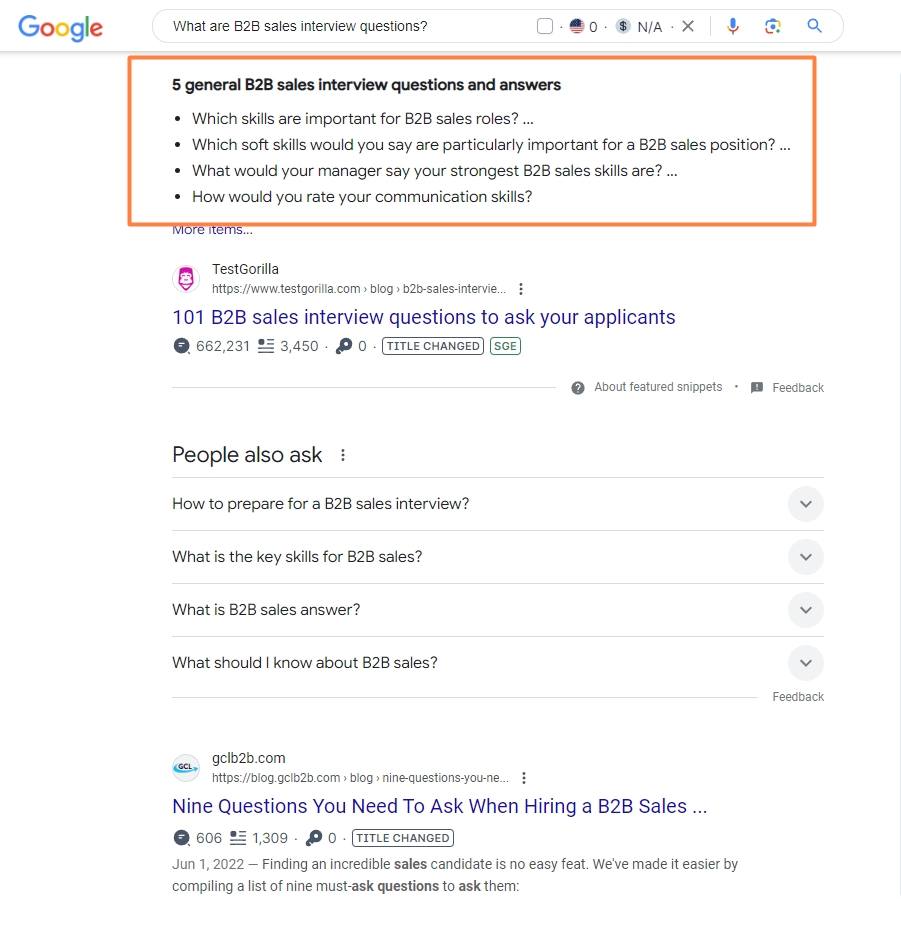Voice search technology has risen rapidly from nowhere to over 50% of adults who now use voice search on a daily basis. 🎙️🔍
Using digital assistants like Alexa, Google Assistant, and Siri, the technology is changing how we interact with technology and find information online.
Unlike traditional SEO, SEO for voice search focuses on natural language and conversational keywords.
As more people rely on voice search for quick answers and local info, it's essential to update your digital marketing strategies to stay ahead.
But when it comes to using effective SEO for voice search, where do you start?
This post will guide you through the critical strategies you need to adopt to:
- Improve your voice search rankings
- Ensure you keep up with the future of voice search SEO and don't get left behind.
Let's get started...
What Exactly Is Voice Search?
Voice search involves doing an online search by speaking to a device.
We're all familiar with digital assistants like Alexa, Google Assistant, and Siri.
Using natural language processing (NLP) and machine learning, such technology is able to understand and respond to your questions by:
- Conducting an online search on your behalf
- Delivering the results, either spoken or displayed on the screen.

This type of search differs from traditional search (e.g. typing something into Google) in a couple of key ways. Such queries:
Traditional search: "best pizza places"
Voice search: "What are the best pizza places near me?"
Voice searches, as in the example above, often include questions that require quick, straightforward, and easy-to-understand answers.
To perform well with voice search, content should be matched more with how people speak rather than what they might type into a search engine (in doing so, you'll often cater for the latter anyway).
Voice search queries are typically longer and more conversational, requiring content that mirrors natural speech patternsClick To Post OnWhy Is SEO For Voice Search Important?
Many voice searches have local intent, such as someone trying to find nearby businesses of a particular type.
The use of appropriate SEO strategies for voice search is therefore particularly important if you're a local business.
- Where's the nearest coffee shop?
- What time does the grocery store close?

By optimizing your content for such local voice search queries, you can:
- Improve your visibility in voice search results
- Attract more local customers.
Doing so means:
In addition, make sure your business information is up-to-date too and easily accessible, increasing the likelihood of your business showing up in the results.
The 3 Key Factors That Influence Voice Search Rankings
Optimizing for voice search SEO involves understanding the nuances of how people use voice technology.
Let's explore the key factors that can significantly influence your voice search rankings:
1. Use Natural, Conversational Language
NLP (Natural Language Processing) is crucial for voice search because it enables digital assistants (8 billion of them in 2023) to understand and process human language.
This technology is based on how people naturally speak in conversation, so your content should reflect that too.
To Optimize:
- Remember that voice searches are often more conversational and longer than text searches—for example, "What's the weather like today?", rather than "weather today".
- Ensure your content reflects natural language. How does your audience speak? Frame your content to match that conversational tone.

2. Answer Question-Based Queries
Voice searches frequently start with question words like "how," "what," "best," and "where."
Voice searches often begin with question words like 'how,' 'what,' 'best,' and 'where'. Optimizing for voice search SEO means answering such queries directly.Click To Post OnTo optimize for question-based queries, adapt your content to answer common questions directly.
To Optimize:
- Identify common questions related to your business or industry, using research tools like Answer the Public.
- Structure your content to provide clear and concise answers.
A blog post titled "What are the Best Italian Restaurants in ~City~?" can increase your chances of appearing in relevant voice search results. 
3. Cater to Local Searches
Voice search is closely tied to local searches, with users often looking for nearby businesses or services.
- BrightLocal reported that 58% of consumers use voice search to find local business information.
Ensuring your local listings are accurate and up-to-date is essential for capturing this traffic.
To Optimize:
- Include relevant local keywords in your content, such as "best coffee shop in ~City~"
- Optimize your Google My Business listing with current information about your location, hours, and services.
By ensuring your content reflects natural language, and is adapted to cater for question-based queries and local search intent, you maximize your chances of showing up for people using voice search.
You also stay ahead of competitors who may not have yet realized they have to do anything different than traditional SEO.
But that's just an overview.
Let's now dig deeper into optimizing your content for voice search, including some advanced techniques and strategies...
How to Optimize Your Content for Voice Search: 4 Advanced Strategies
1. Format Content for Easy Readability
Voice search prioritizes content that answers questions directly and concisely. Formatting your content for easy readability can significantly enhance its chances of being picked up by voice search.
Formatting Tips
- Use bullet points and numbered lists to break down information into digestible chunks.
- Keep paragraphs short and to the point.
- Include direct answers to common questions at the beginning of your paragraphs or sections.
If your content addresses "How to change a tire," start with a step-by-step list immediately after the question.
2. Structure Content to Appear In Featured Snippets
Featured snippets, also known as 'position zero', are brief excerpts of text that appear at the top of Google's search results, before the main organic listings.

These snippets are often sourced for voice search answers, making them a prime target for optimization.
- SEMrush found that 70% of all answers returned from voice searches came from a SERP feature like a featured snippet.
How to Optimize for Featured Snippets
You increase the chances of appearing in the featured snippets by structuring your content in the right way:
- Structure your content to answer questions clearly and directly.
- Use headings that resemble common voice search queries (e.g., "How to Paint a Room").
- Provide concise answers followed by detailed explanations if necessary.
3. Implement Schema Markup
Implementing schema markup on your website helps search engines understand the context of your content by providing some additional meta information, making it more likely to be selected for voice search results.
Click through on the following guide to learn how to approach it:
If you own a restaurant, using schema markup to detail your menu, operating hours, and location can help search engines deliver this information in response to relevant voice queries.
Websites with structured data can experience a 30% increase in click-through rates, demonstrating the impact of this practice.
4. Improve Speed and Accessibility
Optimizing your website for voice search isn't just about content, but about ensuring that your site is easy to read and performs well.
Here’s how to enhance your site’s readability and performance to improve voice search SEO:
Optimize for Mobile Devices
Since most voice searches are conducted on mobile devices, ensuring your website is mobile-friendly is crucial.
This means having a responsive design that adapts to different screen sizes, easy navigation, and quick loading times.
- Google reports that 53% of mobile site visits are abandoned if a page takes more than three seconds to load, highlighting the importance of mobile optimization.

How to Optimize for Mobile:
- Use a responsive design to ensure your site looks great on all devices.
- Simplify navigation to help users find what they need quickly.
- Optimize images and other media for faster loading times.
Page Speed
Page load speed is a critical factor for both SEO and user satisfaction. Slow-loading sites can lead to higher bounce rates and lower search engine rankings.
- The probability of bounce increases by 32% as page load time goes from 1 second to 3 seconds, making it clear that speed is crucial.
Tips to Improve Page Speed:
- Compress images to reduce their file size without sacrificing quality.
- Leverage browser caching to store parts of your website on users' devices for faster loading.
- Use a content delivery network (CDN) to distribute your content across multiple servers worldwide.
Secure and Accessible Websites
A secure (HTTPS) website is essential for building trust and improving SEO.
HTTPS encryption protects users' data, making them feel safer when interacting with your site.
Additionally, following web accessibility practices ensures your site is usable for all visitors, including those with disabilities.
Best Practices for Security and Accessibility:
- Switch to HTTPS to protect user data and improve search rankings.
- Provide text alternatives for images to aid users with visual impairments.
- Ensure sufficient color contrast for readability.
- Make your site keyboard-friendly to assist users with mobility impairments.
Google has confirmed that HTTPS is a ranking signal, meaning secure websites are favored in search results.
By focusing on these advanced strategies—content formatting, featured snippets, implementing schema markup, and improving site speed and accessibility—you can improve your chances of being featured in voice search results significantly.
Voice Search and The Future of SEO
Voice search is of course continuously evolving, driven by advancements in AI and machine learning that enhance the accuracy and capabilities of digital assistants.
Staying ahead of the curve means anticipating these changes and adapting your strategies accordingly.
Here’s what you need to know about the future of voice search and how it may impact your SEO activities.
Future Trends Related to AI Advances
Voice search is becoming more precise and context-aware as AI and machine learning technologies advance.
Digital assistants are better at understanding natural language, making voice queries more reliable and accurate.
Current Trends to Watch:
- Integration of AI and machine learning—these technologies are improving how digital assistants understand and process complex queries.
- Increased use of voice search—as more devices incorporate voice search capabilities, from smartphones to smart home devices, the volume of voice searches will continue to grow.
Keep your content well-structured and relevant to ensure it meets the needs of these increasingly sophisticated search technologies.
Integration with Other Technologies
Voice search is likely to integrate with other emerging technologies, such as smart home devices, AR, and IoT.

Understanding these connections can help you prepare for a future where voice search is even more significant.
Consider how your content might be accessed and utilized through AR applications and IoT devices.
Frequently Asked Questions
What exactly is voice search?
Voice search involves doing an online search by speaking to a device, interacting with digital assistants like Alexa, Google Assistant, and Siri.
Why is SEO for voice search important?
SEO for voice search is crucial for improving visibility, attracting local customers, and catering to the growing number of searches with local intent.
How to optimize for featured snippets?
Optimize for featured snippets by structuring content to answer questions clearly, using headings resembling common voice search queries, and providing concise answers.
To Conclude
Optimizing for voice search means focusing on natural language, local search intent, formatting content in optimal ways, and improving site performance.
Adopting such strategies are highly likely to boost your visibility in voice search results, attracting additional traffic, prospects and customers.





